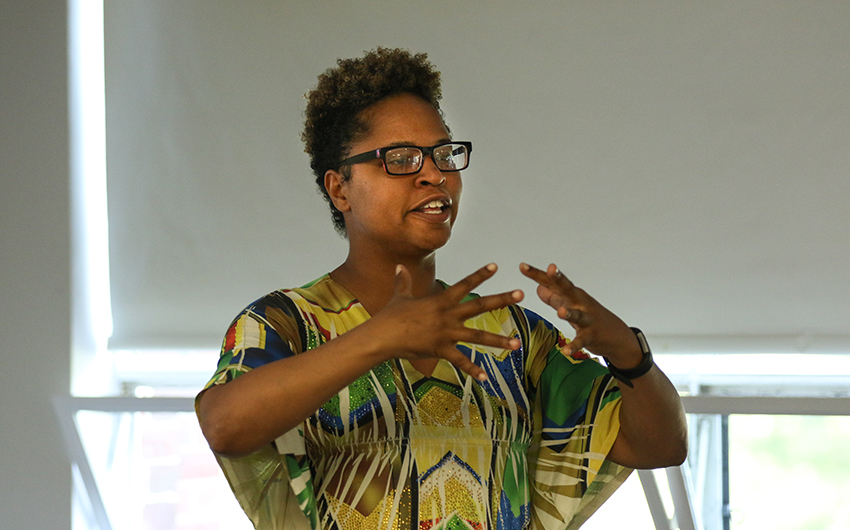
TOPICS:
*Note: the classroom photo above features Dr. Katherine Morrison leading the epidemiology course in 2017.
For Professor of Public Health and Wellness Dr. Katherine Morrison, the COVID-19 pandemic isn’t only a momentous chapter in global history. It is a once-in-a-lifetime teaching opportunity. This fall, students in her epidemiology course are using the outbreak as a real-time case study to learn the science of COVID-19 by studying the patterns of the virus and how that data informs public health programs and policies.
“COVID-19 is the centerpiece of my teaching,” she says. “This is a very novel virus that we, as a scientific community, are trying to learn more about, and it presents a unique opportunity for the students to really understand the pattern of outbreaks.”
Each week, students use news coverage and current research to evaluate past and current events of the pandemic and think critically about the origins, risk factors, and transmission of the coronavirus, while also assessing the social and political implications. “We try to answer questions such as ‘How and where did it begin,’ ‘What type of data is being collected,’ and ‘What are the political issues surrounding the virus,” says Dr. Morrison.
As part of the course, which is held remotely this semester, students recently started an online contact tracing training offered by Purdue University with content from the World Health Organization and guidance from the U.S. Centers for Disease Control and Prevention. Upon completion of the training, students receive a formal certificate. The common public health technique used to break the chain of infectious disease transmission has turned into one of the biggest job opportunities in the country this year as cities and states work to ramp up their contract tracing efforts to combat the spread of the coronavirus.
Thomas Williamson ’20, a public health and wellness major, says the contact tracing training provides crucial context to the in-class learning and believes it will offer him an advantage as he applies to competitive graduate programs. “The online contact tracing training has been hugely informative for gaining further understanding of epidemiology and the spread of disease. All of the quizzes and content have only cemented what we’ve been learning in class,” he says. “I’m currently applying to graduate programs, and I know the contact tracing certificate will only put me ahead of other applicants.”
Williamson first developed a career interest in public health in 2014 during the Ebola crisis in West Africa. He plans to pursue a role as an epidemiologist after graduate school, and is among many from the public health and wellness program at Curry that have continued on to advanced degrees. The College recently partnered with Boston University School of Public Health to offer Curry students early admission and scholarship opportunities for its graduate programs.
Although Williamson was already invested in studying epidemiology, he says the current outbreak makes the course content exciting for the entire class. “We’re living in an infectious disease outbreak, and it’s a huge role in our lives whether we like it or not,” says Williamson. “COVID gives us another perspective on the concepts we’re learning. If we were talking about the black plague or the Spanish flu, it wouldn’t have the same impact.”
Dr. Morrison agrees with the sentiment on the increased class engagement. “The students are responding to the class format with intrigue and excitement. As a matter of fact, at times, it is difficult to reign in the discussions.”
Yet, even as the post-COVID world hopefully unfolds soon, Dr. Morrison will continue to apply the real-world examples of the current health crisis within her teaching approach for the course. “Classes will become less about lecturing and more about experience,” she says. “We’re continually evaluating opportunities within the Public Health and Wellness program to involve more real-time learning in the classroom, including more courses that examine the impact of disease, illness, and injury on humanity.”